In what TOGAF ADM phase is the information map linked to other business blueprints?
Which approach to model, measure, and analyze business value is primarily concerned with identifying the participants involved in creating and delivering value?
Which of the following best describes the relationship between business models and business architecture?
Exhibit.
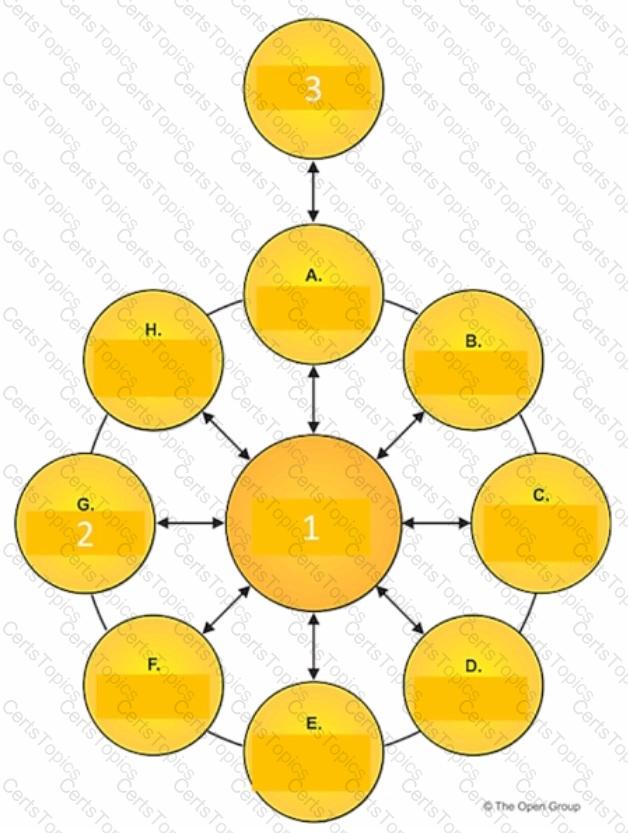
Consider the diagram of an architecture development cycle.
Select the correct phase names corresponding to the labels 1, 2 and 3?
When developing a Business Architecture, which of the following best describes the approach to take If no Architecture Descriptions exist?
Question: Which of the following best describes a business capability map?
Which of the following best describes a benefit of business models?
Consider the diagram.
What are the items labelled A, B and C?
In which phase of the ADM cycle do building blocks become Implementation-specific?
Which statement best describes iteration and the ADM?
Consider the following representation of a business model:
Which of the following business models is this an example of?
What are the following activities part of?
• Initial risk assessment
• Risk mitigation and residual risk assessment
• Risk monitoring
Which of the following best describes a business capability?
What Is presented as striking a balance between positive and negative outcomes resulting from the realization of either opportunities or threats?
What are the four architecture domains that the TOGAF standard deals with?
Where are business scenarios used most prominently in the TOGAF ADM?
Complete the sentence. The "Name" part of the recommended TOGAF template for Architecture Principles should________________________
Which of the following is a derived relationship in an organization map?
Consider the following Business Capability Example:
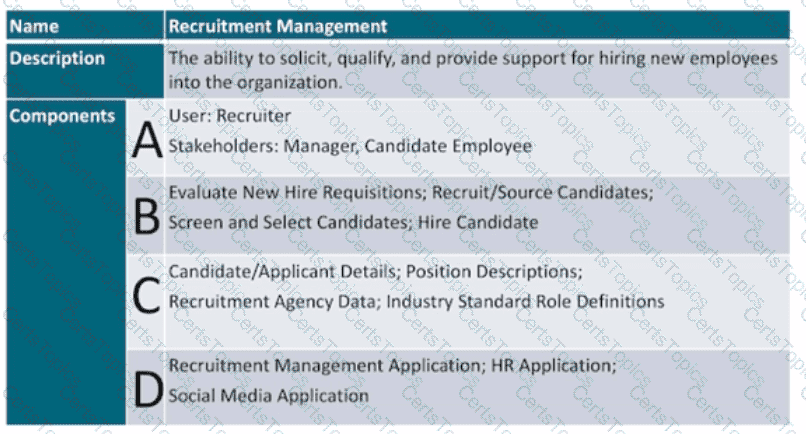
Which of the following are A and C?
Complete the sentence. A business model is a description of the rationale for how an organization creates, delivers, and captures
Which approach to modeling business value is designed to create and end-to-end perspective of value from the customer's perspective?
What is the relationship labeled Y?
Consider the image showing basic architectural concepts:
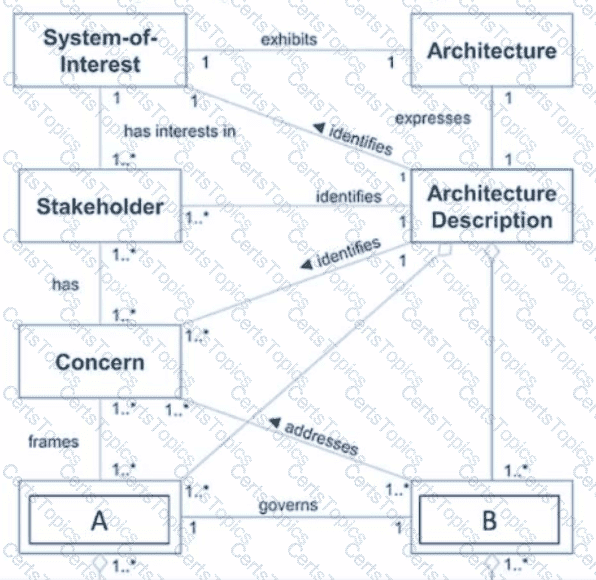
What is an objective of the ADM Preliminary Phase?
Complete the sentence. The classification model of the Architecture Landscape is divided Into levels known as________________
Consider the following graphic from the TOGAF Standard:
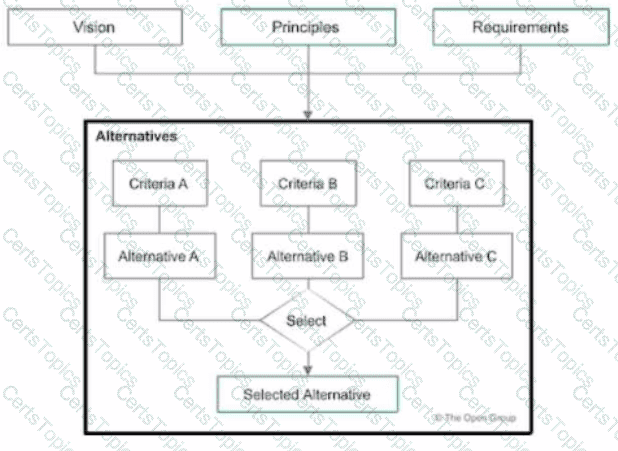
Why is this method used?
Which of the following best describes the purpose of the Gap Analysis technique?
When developing a Business Architecture, which of the following is recommended if an enterprise has existing Architecture Descriptions?
Consider the following extract of a model showing relationships between Business Architecture concepts:
What is the relationship labeled X?
Which of the following describes how the Enterprise Continuum is used when developing an enterprise architecture?
Which of the following best summarizes the purpose of Enterprise Architecture?
What can be introduced to formalize a joint agreement between development partners and sponsors on the deliverables, quality, and fitness-for-purpose of an architecture?
What is the role of an Architecture Board?
What component of the Architecture Repository is an architectural representation of SBBs supporting the Architecture Landscape?
Consider the following output from Phase A:
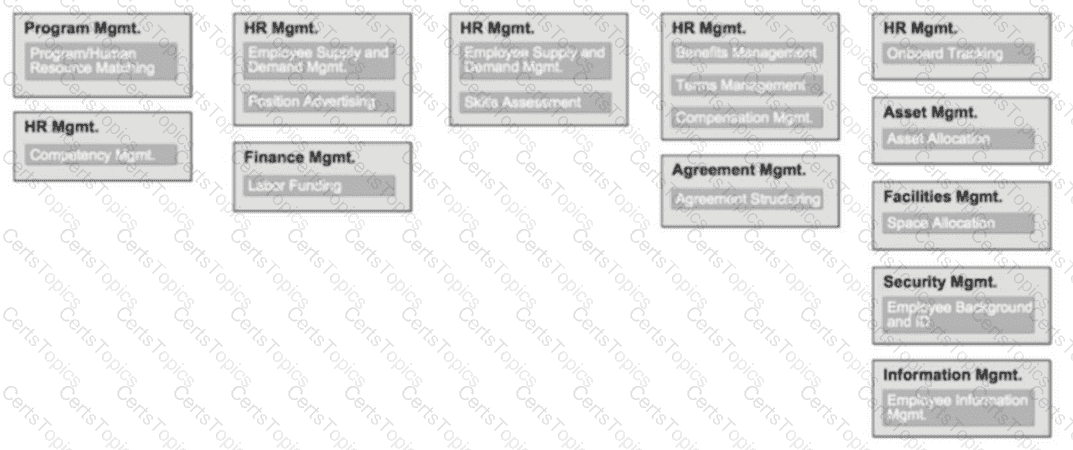 What is this an example of?
What is this an example of?
Consider the following descriptions of ADM Phases:
1. It includes creation of an Enterprise Architecture Capability
2. It provides architectural oversight of the implementation
Which ADM Phases are these?
In the diagram, what are the items labelled A, B, and C?
In Phases E and F, what deliverable Includes actions from the Business Transformation Readiness Assessment?
What Business Architecture concept is most related to an information Map?